When Manchester United signed Christian Eriksen on a free transfer during the summer transfer window, few expected him to be starting week-in, week-out. For many, he was mainly regarded as a backup option for Bruno Fernandes in the No.10 position, a rare opportunity in the market that was worth a crack.
Fast forward a couple of months, and the Danish international has established himself as a key player at the heart of United’s set-up under Erik ten Hag, operating in a deeper role as a “free eight”. The 30-year-old has started every single game for the Red Devils so far, amassing nearly 530 minutes of Premier League football. Diogo Dalot is the only other outfield player to have done so as well, claiming the right-back spot in every Premier League and Europa League fixture so far.
As an integral piece of the midfield, Eriksen offers something that has been missing for many years now at Old Trafford — the creative spark from deep with the composure to be comfortable on the ball.
Who would have thought, after his tragic collapse at Euro 2020 and six-month stint at Brentford, that Christian Eriksen would be running the show at the Theatre of Dreams?
This tactical analysis and scout report highlights Christian Eriksen’s deeper role at Manchester United. The analysis looks at how Christian Eriksen has adapted to Erik ten Hag’s tactics and system.
Position
Ten Hag’s new side endured a nightmare start to the campaign, losing their opening two matches against Brighton and Brentford. Against Brighton, Ten Hag started Eriksen in the false-nine position due to Anthony Martial’s injury and Cristiano Ronaldo’s lack of match fitness. He looked out of sorts and ended the game as a holding midfielder. On his return to the Community Stadium, Eriksen played in the No.6 role from the off and experienced a horrid afternoon. United got humiliated 0-4 and the Dane was left exposed on the second goal as David De Gea attempted to play out from the back.
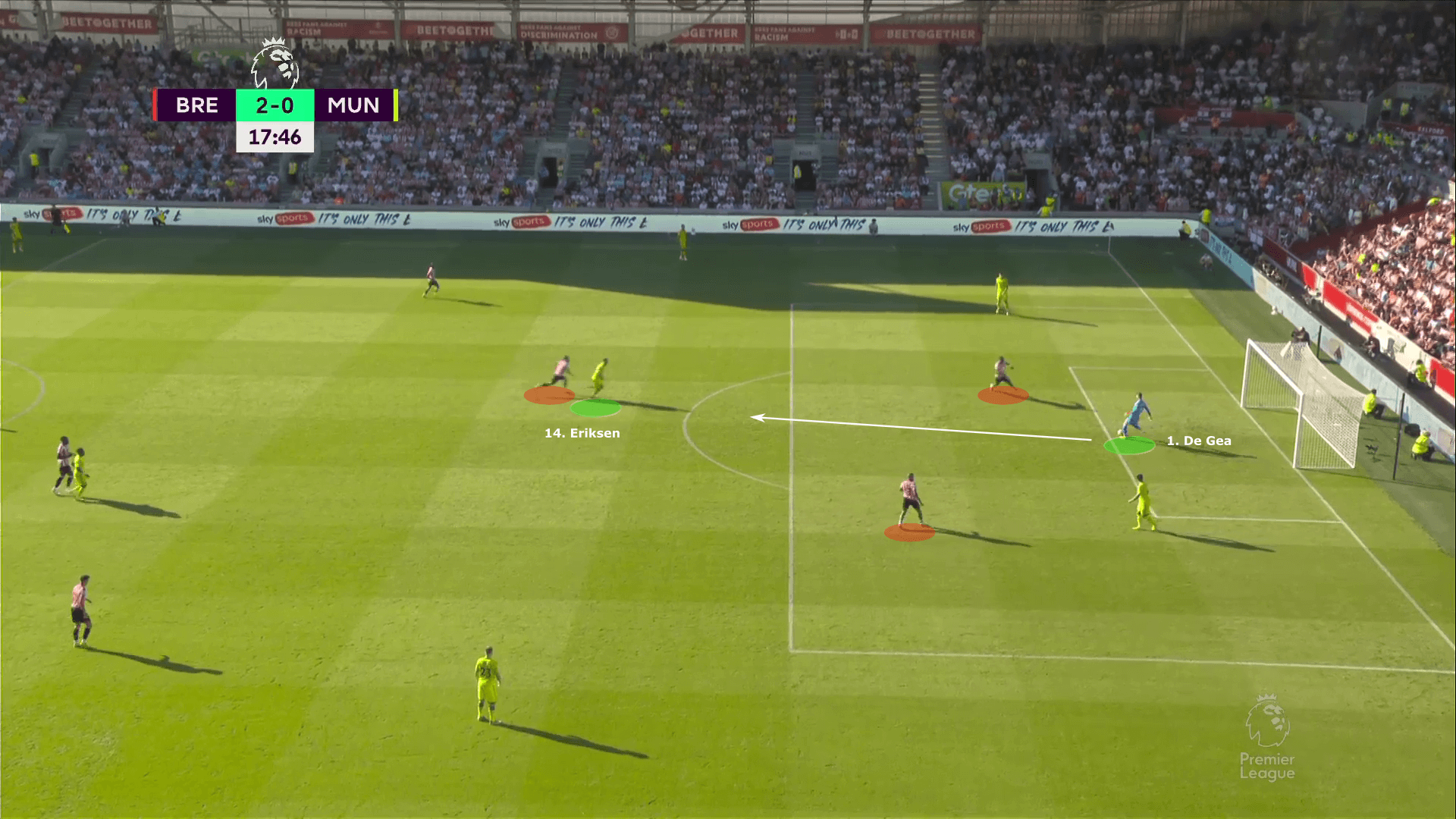
Following the embarrassment in London, Ten Hag decided to take Harry Maguire, Luke Shaw and Fred (who lasted 53 and 45 minutes on the pitch in both games respectively) out of the team. Eriksen was paired with Scott McTominay in a pivot behind Bruno Fernandes. The Dane was charged with a more advanced playmaking identity while McTominay was viewed as the destroyer. The move immediately benefitted both players and has seen an unchanged midfield in four consecutive league wins since.
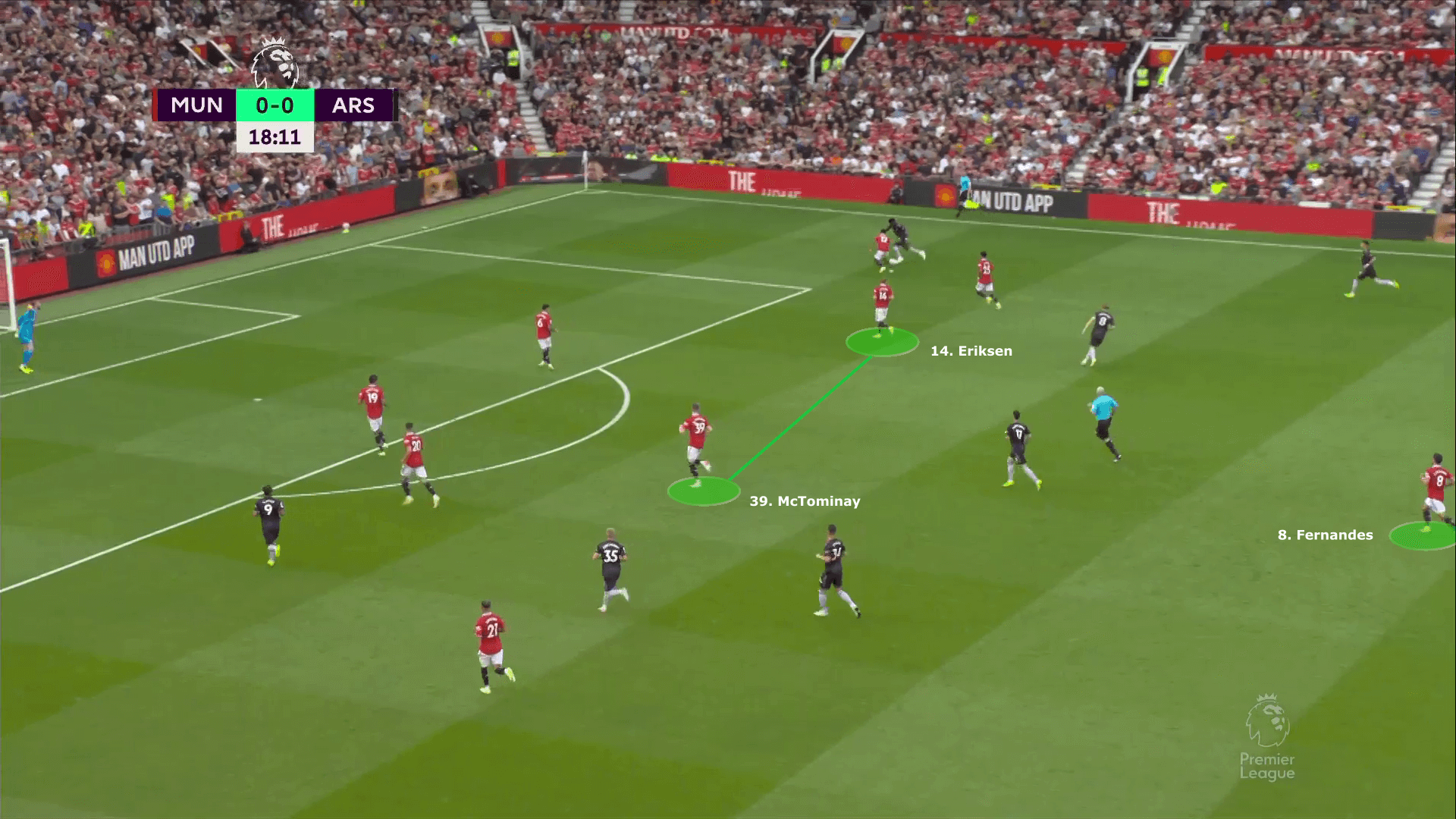
Eriksen has brought a sense of calm to the middle of the park and has provided much-needed clarity and quality in possession. We have not yet seen the ideal way that Ten Hag wants United to play over 90 minutes — it has been a mixed bag so far. In some instances, they control games with possession-based football and in others, they rely on quick counter-attacks – it largely depends on the situation.
At Leicester, we witnessed a brief period of total domination from Manchester United, with players taking up interesting positions. Eriksen dropped deepest of the midfielders to support Raphaël Varane and Lisandro Martínez. Diogo Dalot and Tyrell Malacia drifted inwards as inverted full-backs, positioned so high on either side of Marcus Rashford. Fernandes enjoyed the freedom to roam and exploit any gaps.
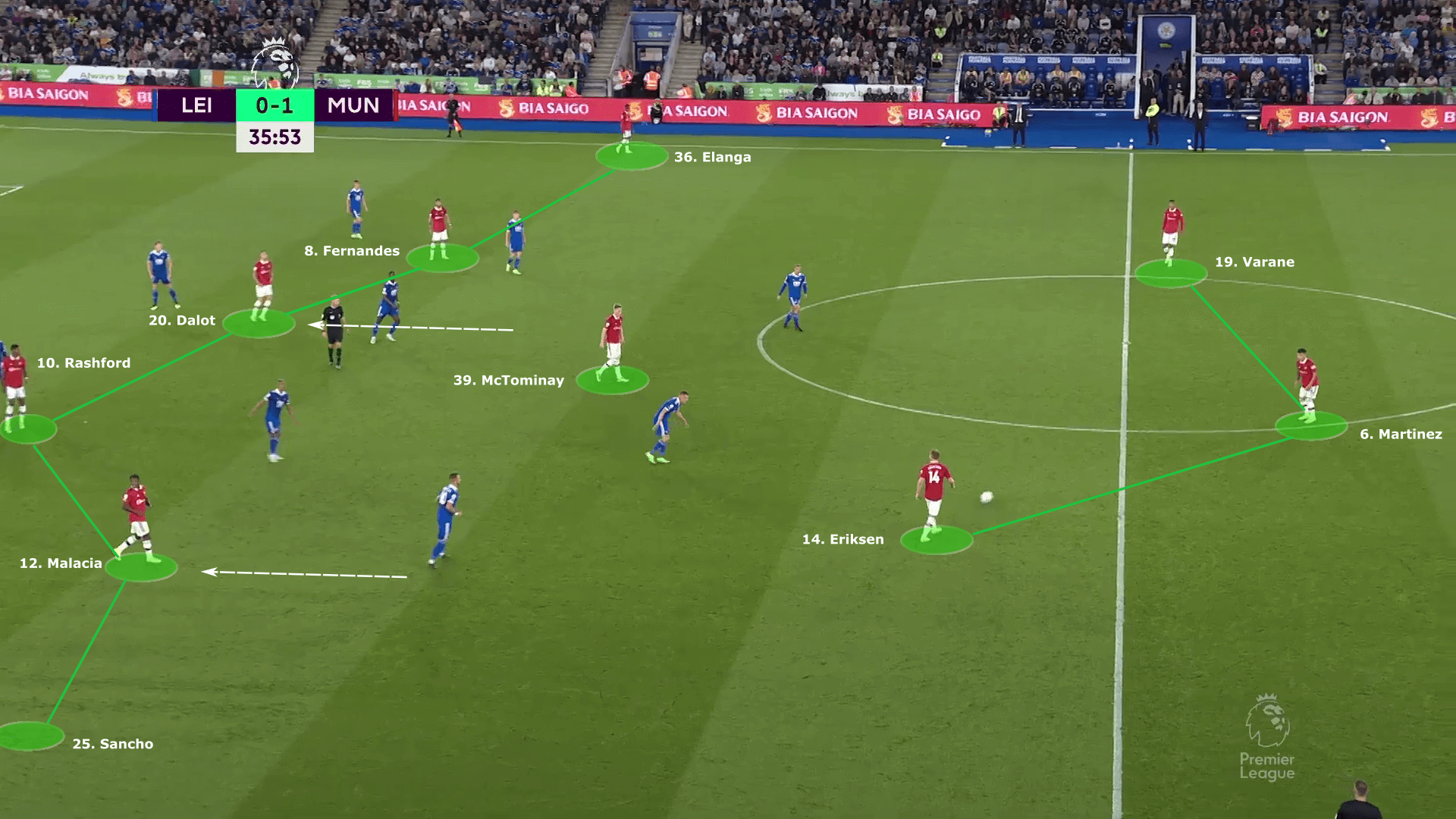
“We put him a little more down on the pitch,” said Ten Hag, referring to the Dane’s deeper position. “Like a six, eight role, he has a lot of freedom, he has to interchange with the spaces where he has to be and the rest have to adapt to that.”
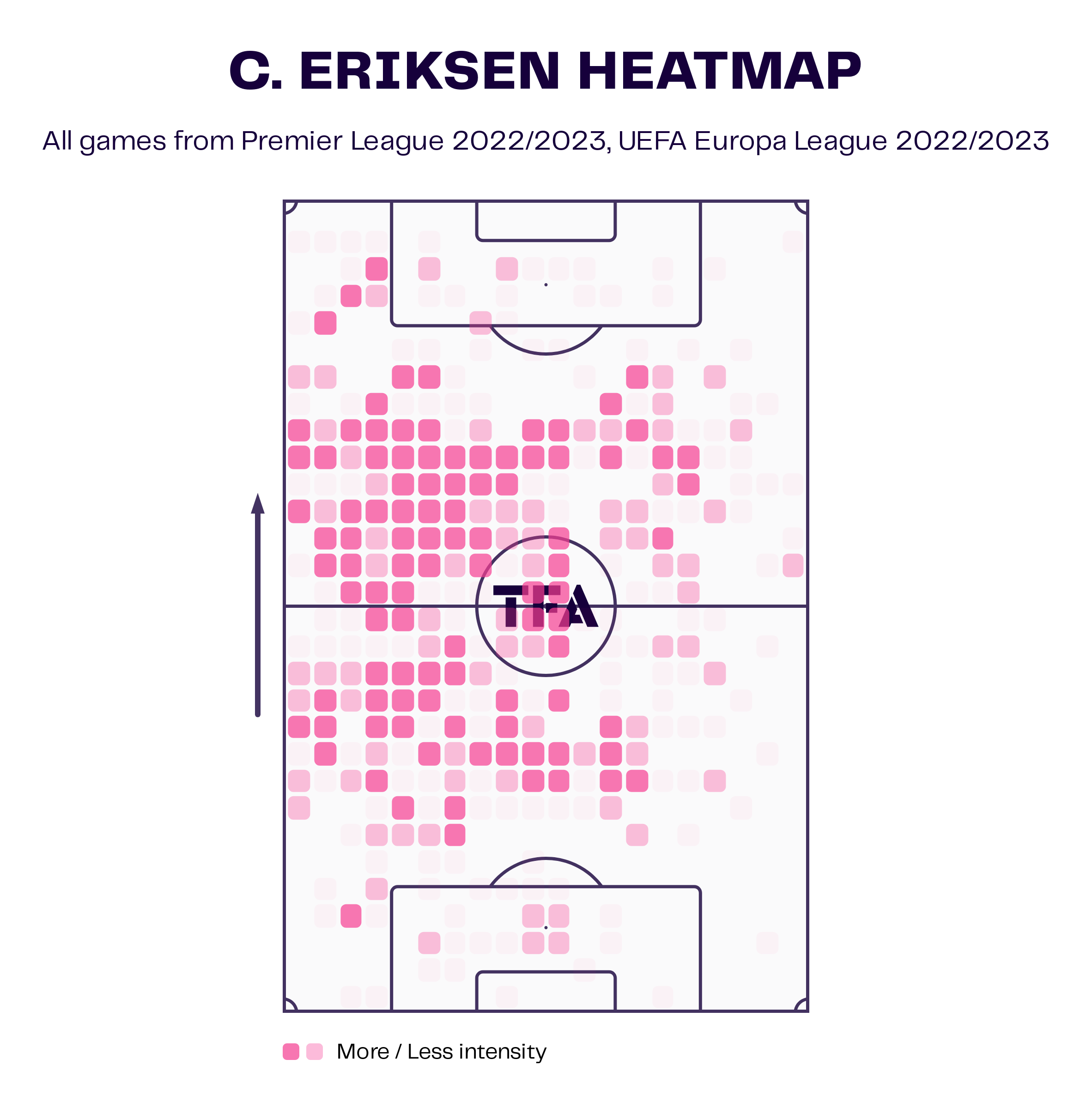
His heatmap demonstrates the amount of space Eriksen has covered during the first eight games and the license he is given to drift all over the pitch. Surprisingly, Eriksen has covered the most distance of any United player in the PL this season, 10.69km per 90. McTominay is second with 10.36km.
Ball progression
The greatest quality Eriksen has added to this United team is his ball progression. The Red Devils have been crying out for a player to transition the play from defence to attack. Very often, Fred and McTominay have been criticized for playing with their backs to goal. The duo cannot spot the gaps, execute and/or time the perfect passes. This leads to the ball being played backwards to the defenders, placing the entire team under pressure.
McTominay has benefitted from having an outlet in Eriksen to lay the ball off to. Bruno no longer has to find himself dropping deeper time and time again to help with ball progression. United’s first goal in the win vs Arsenal highlights the impact of moving the ball more quickly through the lines. Eriksen’s pass into Bruno takes three Arsenal players out of the game and opens up the pitch.
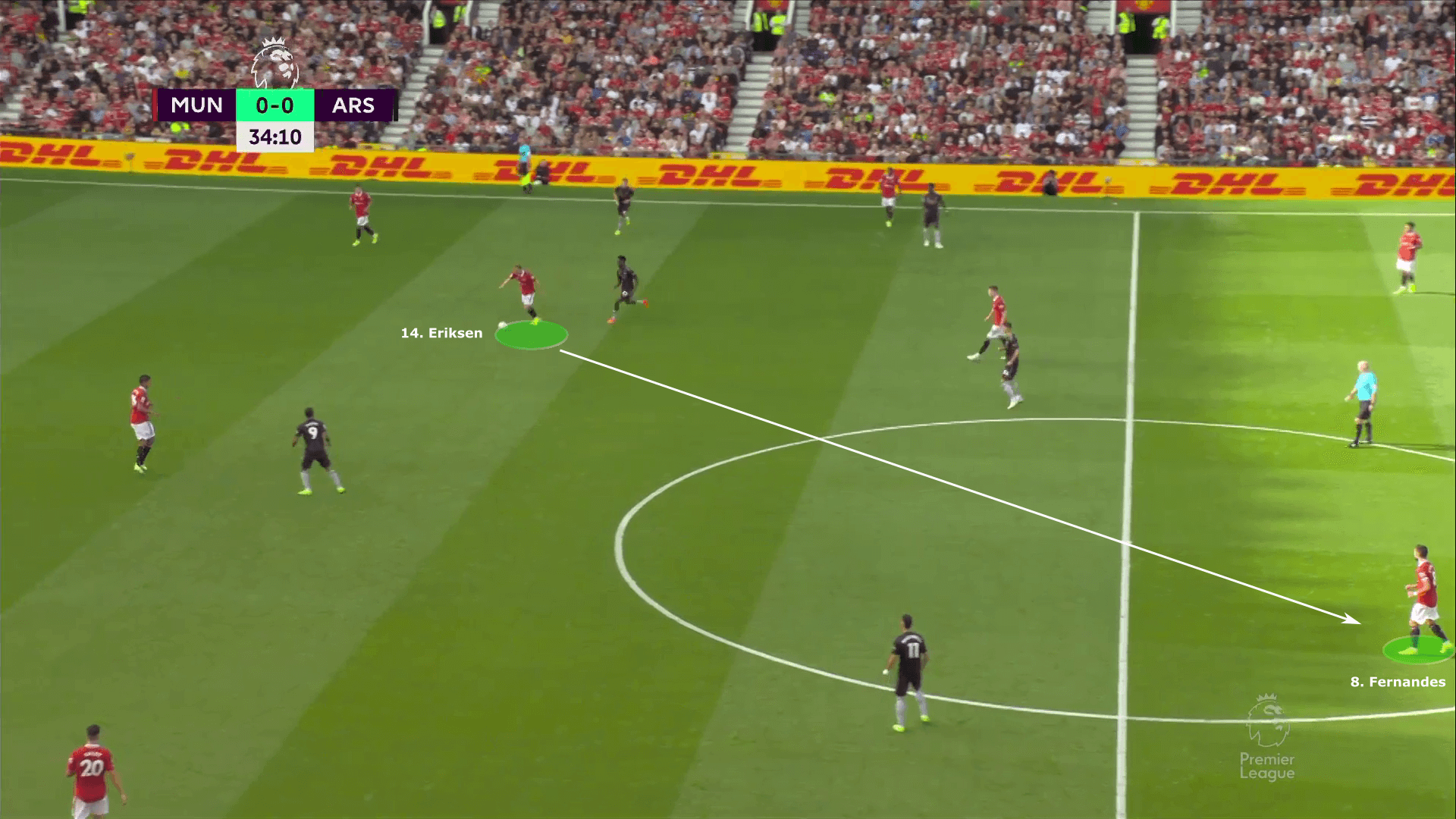
In the second half, United found themselves under the cosh and had to defend deep. With the score at 1-1, the home side won the ball back and Dalot quickly finds Eriksen who has moved into space. As the ball makes its way towards Eriksen, Fernandes makes a forward movement, knowing the ball will reach him. Fred or McTominay might have opted to play the ball back to Martinez and slow the game down, for instance. Marcus Rashford goes on to give United the lead.
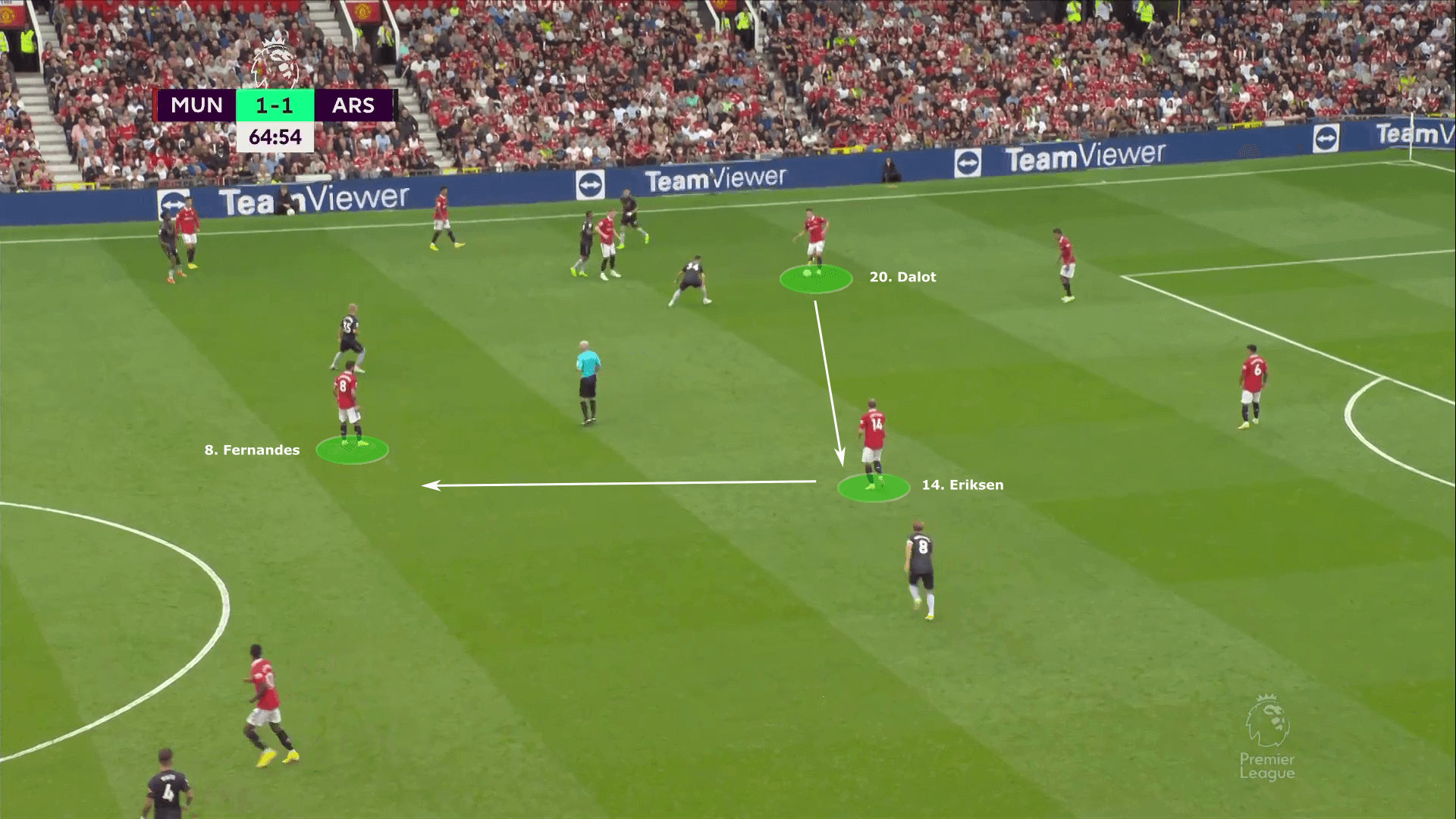
Earlier in his career, Eriksen played as an orthodox No.10, tasked with making key passes into the final third. He has also shown glimpses of that when United are high up the pitch and shifting the ball around the opposition box. His swift interchange with Anthony Elanga on the left led to the crucial opening goal against Liverpool.
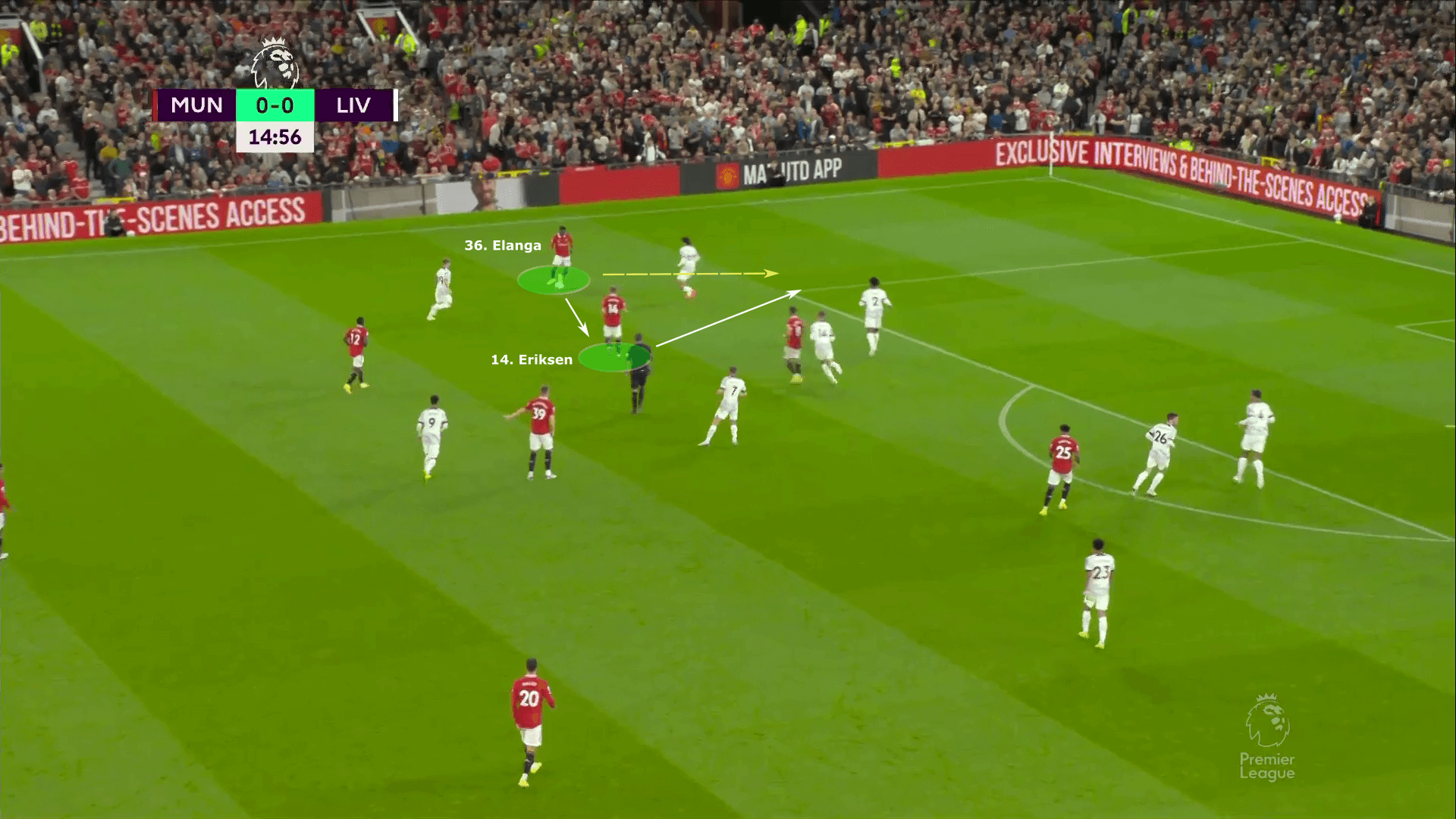
“You feel that in the team, you feel it as a player on the training pitch and in the games,” said Eriksen in a post-match interview. “We’re starting to understand each other, to know where to pass the ball, where to stand, so it makes it easier.”
In addition to passing, Eriksen has found other means to progress the ball, in the form of penetrating carries — with 15 being carries into the penalty area.
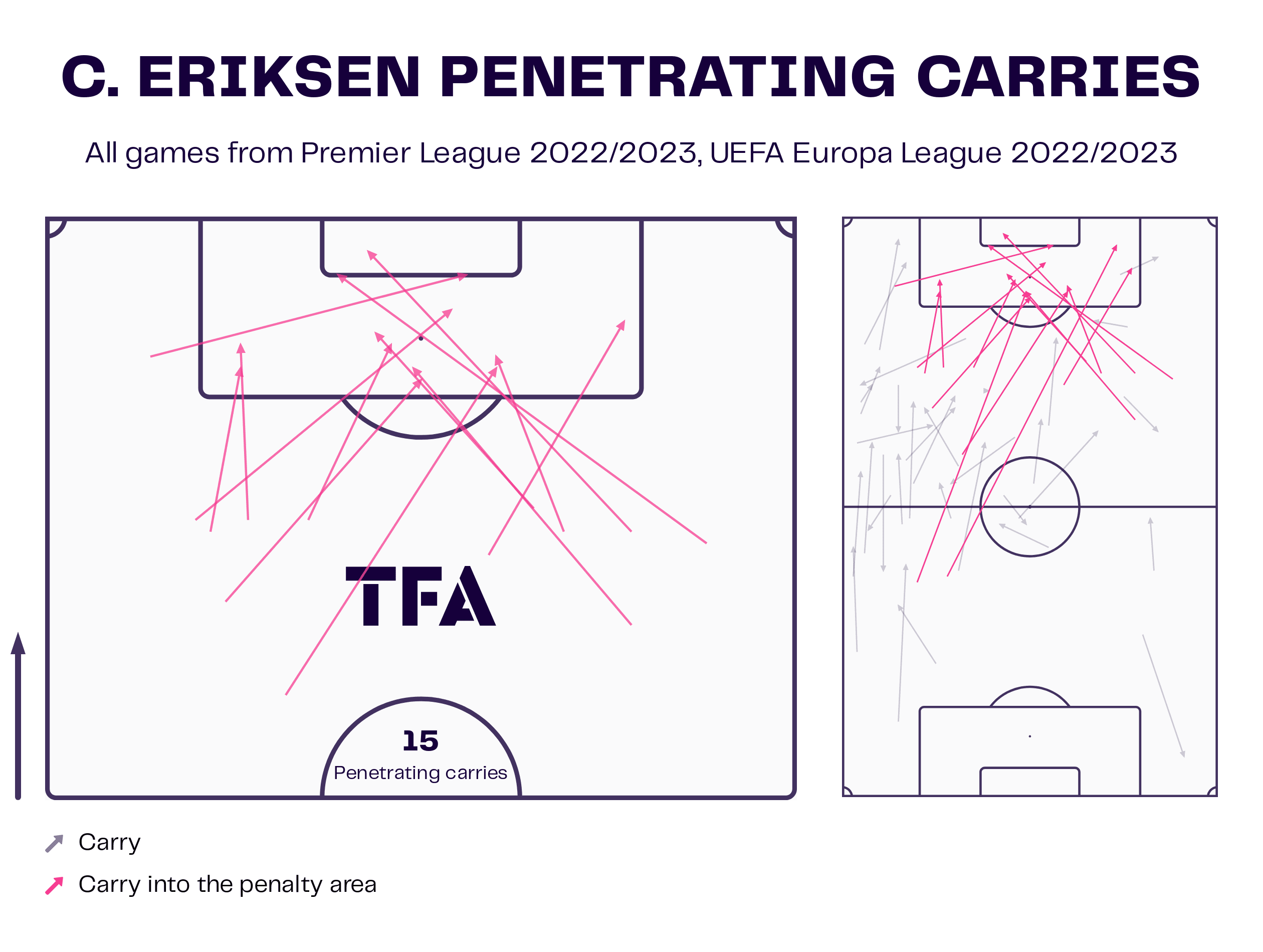
Long passes
The former Inter Milan man has also been integral in getting his team out of pressure in their own third with his ability to spray long passes from deep. In previous seasons, United struggled to move the ball out of tight spaces when playing from the back and sometimes ended up launching hopeful long balls forward.
Here, Eriksen receives the ball from Malacia after a throw-in. Immediately, he has the vision to spot Elanga on the far side and quality to find him with a pin-point cross-field switch.
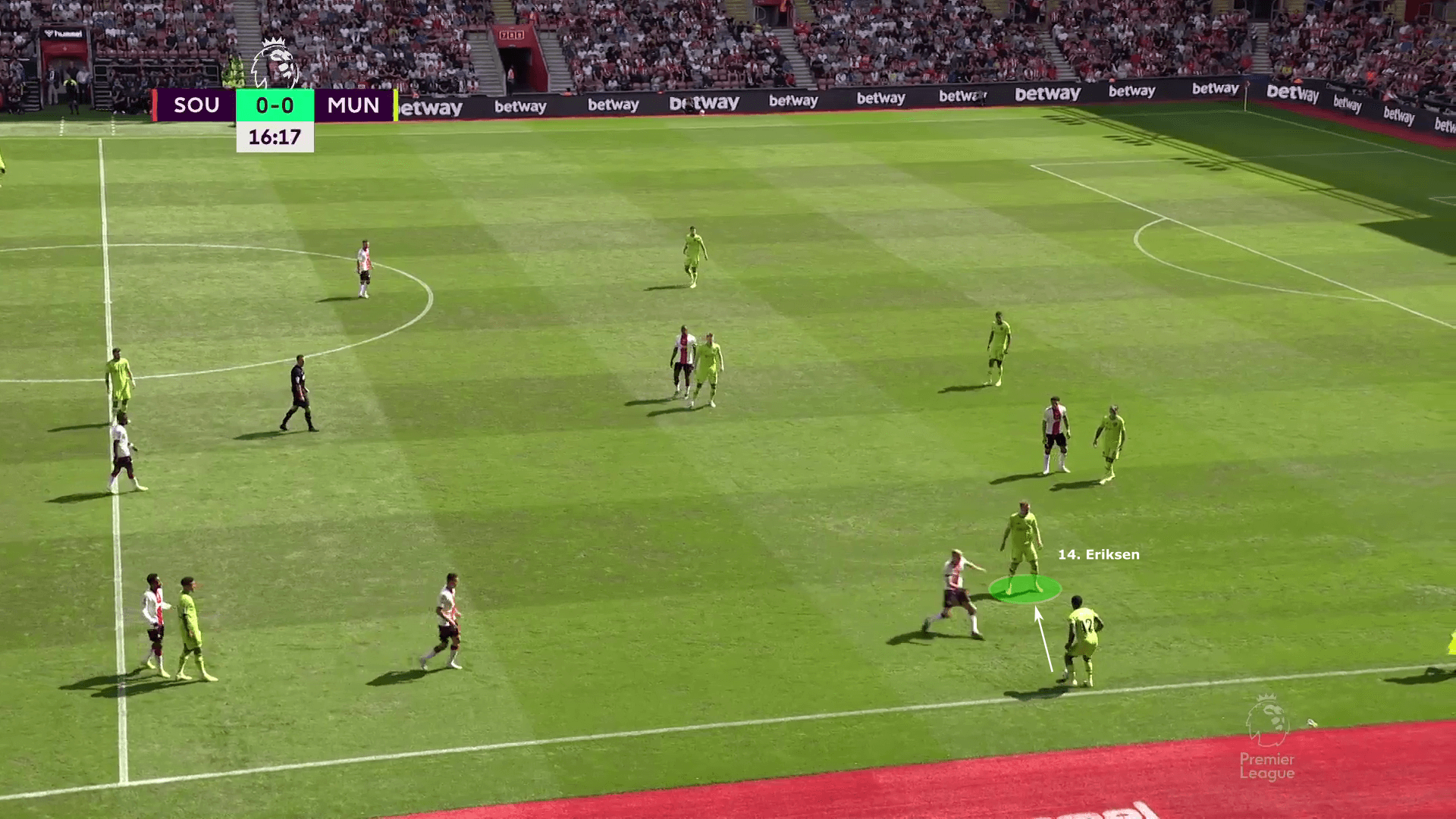
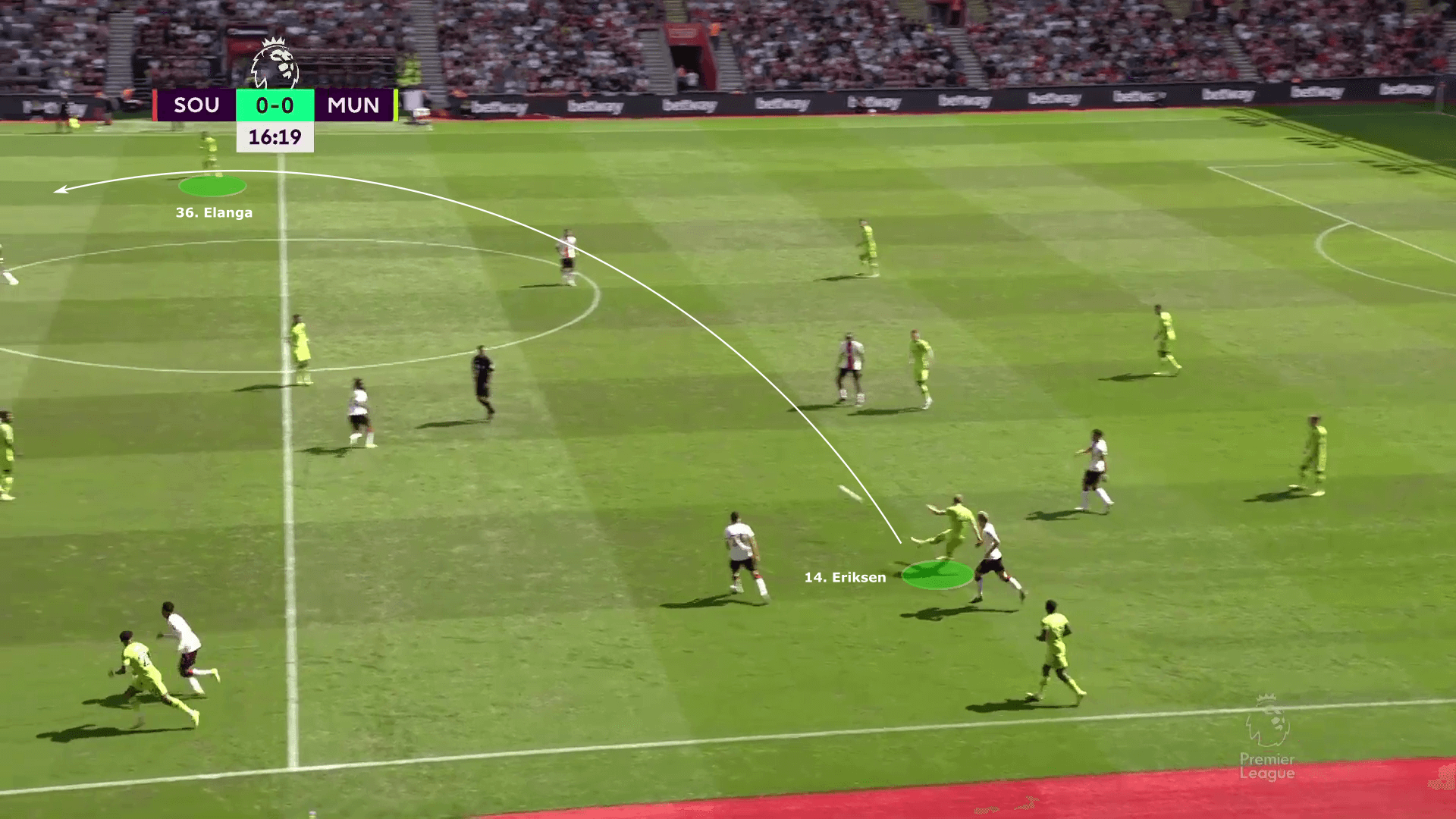
He ranks in the 82nd percentile for attempted long passes among midfielders in the Premier League this season. His completion rate from those is only 44%, however, partly due to many long passes being played in the dying stages of games when United are clinging on to a narrow lead. For short and medium passes, he is averaging an 88.2% and 84.3% pass completion rate, attempting around 48 passes per 90 overall.

Eriksen has also been a threat from set-pieces, designated with whipping in free kicks and corners. This maximizes the benefit from what he excels at and, ultimately, makes United a team that is significantly better than when he isn’t present in the XI.
His ability also benefits United’s pacey forward players who are happy to make runs in behind anticipating that the ball will arrive — knowing they have an elite two-footed passer behind them.
Ronaldo calls for the ball but Eriksen spots Rashford’s run in between the centre-backs.
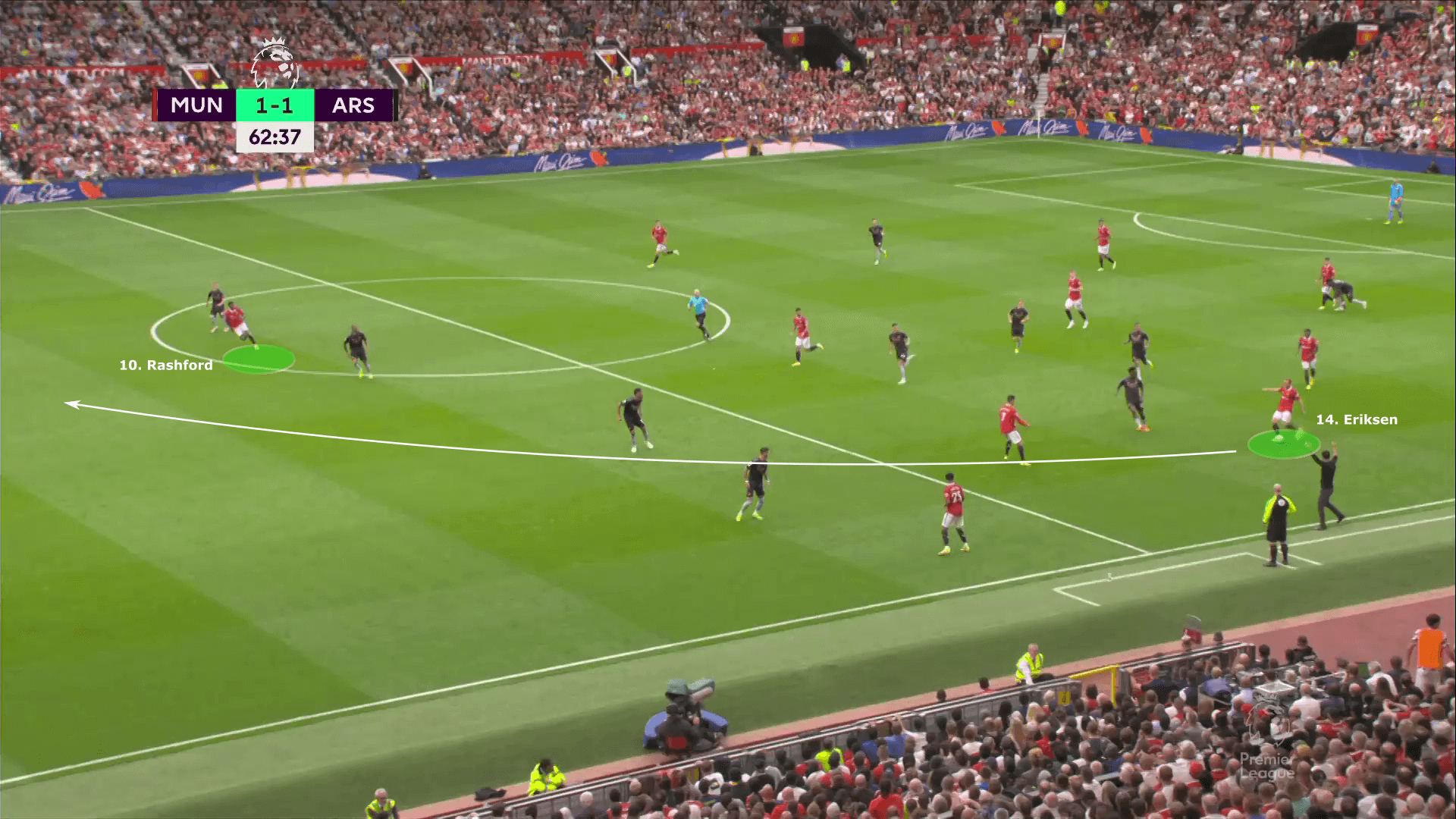
Off-the-ball movements
Eriksen’s work rate has allowed McTominay to focus on and excel at winning duels and tackles in the defensive third. Defensively, he is mainly covering the left half-spaces between Martínez and Malacia and closing down the edge of his box to support McTominay. He is averaging 4.27 interceptions and engaging in 3.5 defensive duels per 90.
The Scot, on the other hand, is averaging 8.84 defensive duels and 5.79 aerial duels per 90. He has also picked up four yellow cards — the most in the side — showcasing his aggressive nature. Eriksen still has room to improve defensively, as sometimes players with more physicality or pace have easily shrugged him off or passed him by. United fans are hopeful added security will arrive in the form of Casemiro, as he gets to grips with a new team, system and league.
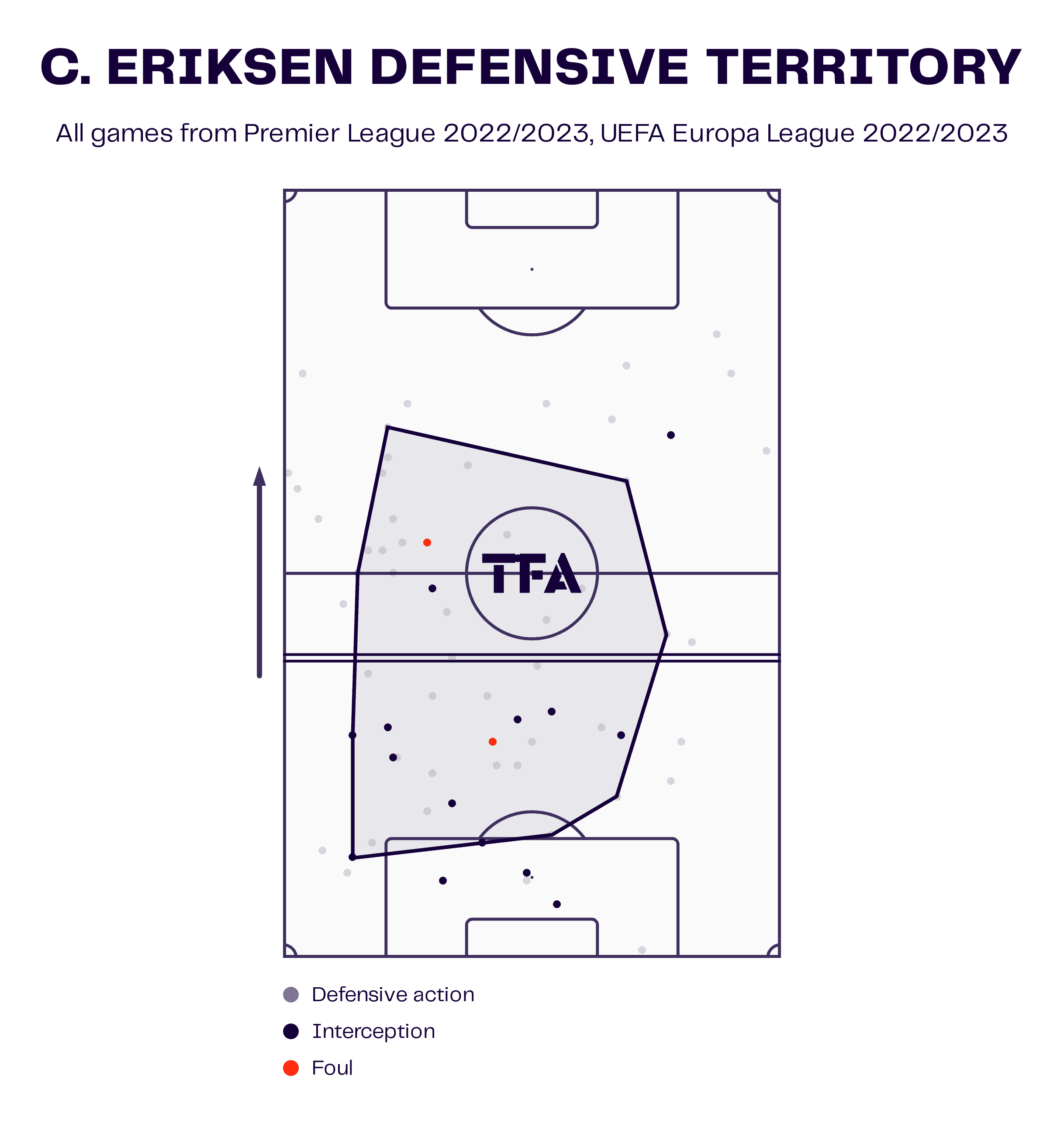
In the attacking phase, the Dane’s off-the-ball movements see him take up intelligent positions on the pitch as well as spot gaps to run into. It was Eriksen who took advantage of Arsenal’s high line to set up the team’s third goal. Initially, he looked to receive the ball from Ronaldo.
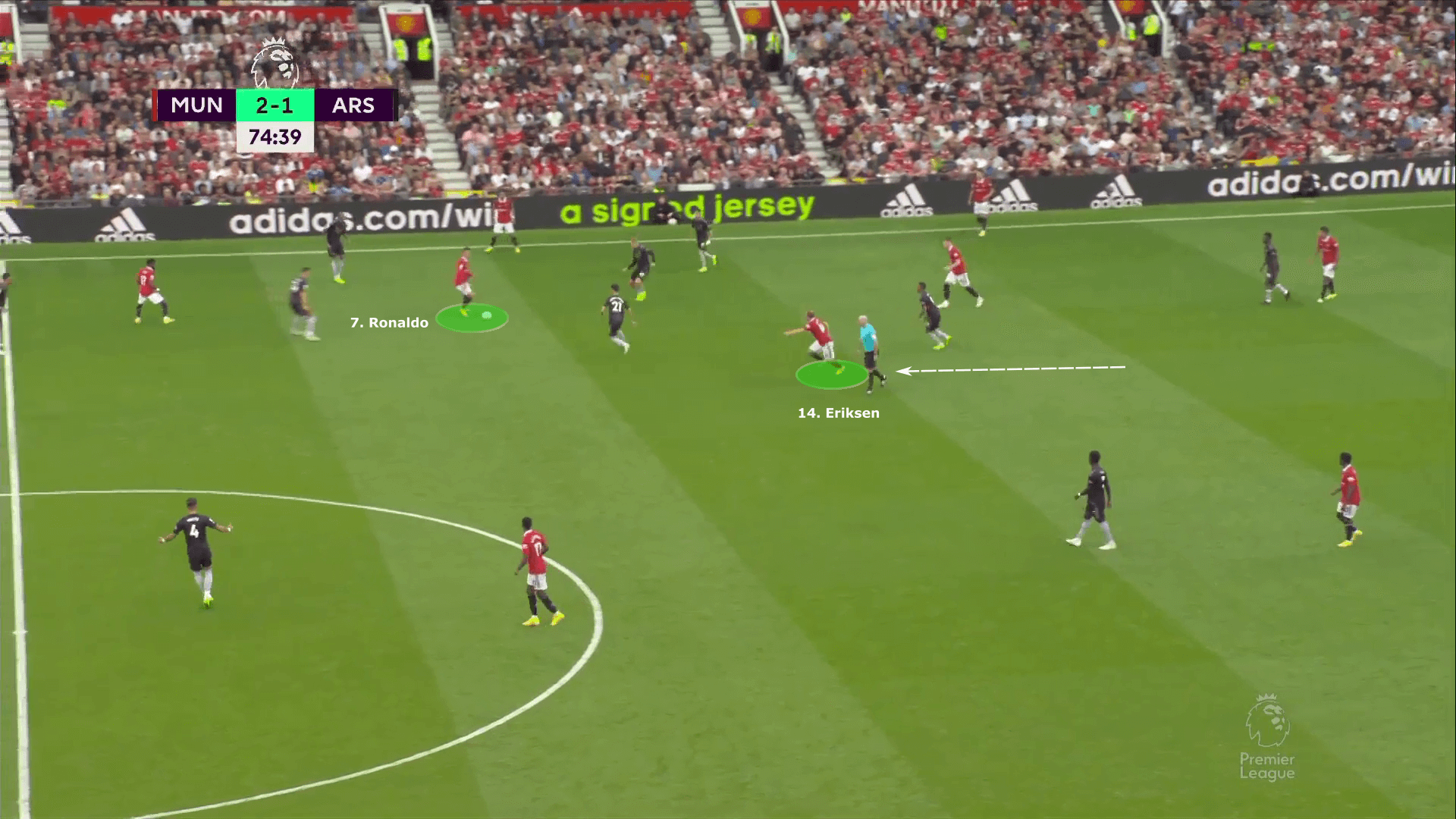
But the five-time Ballon d’Or winner was hassled and the ball made its way to Fernandes near the touchline. Eriksen had the intelligence to continue his run forward and give Bruno the chance to carve open The Gunners’ defensive line. From there, he exhibited his composure to lay it off to Rashford to make it 3-1.
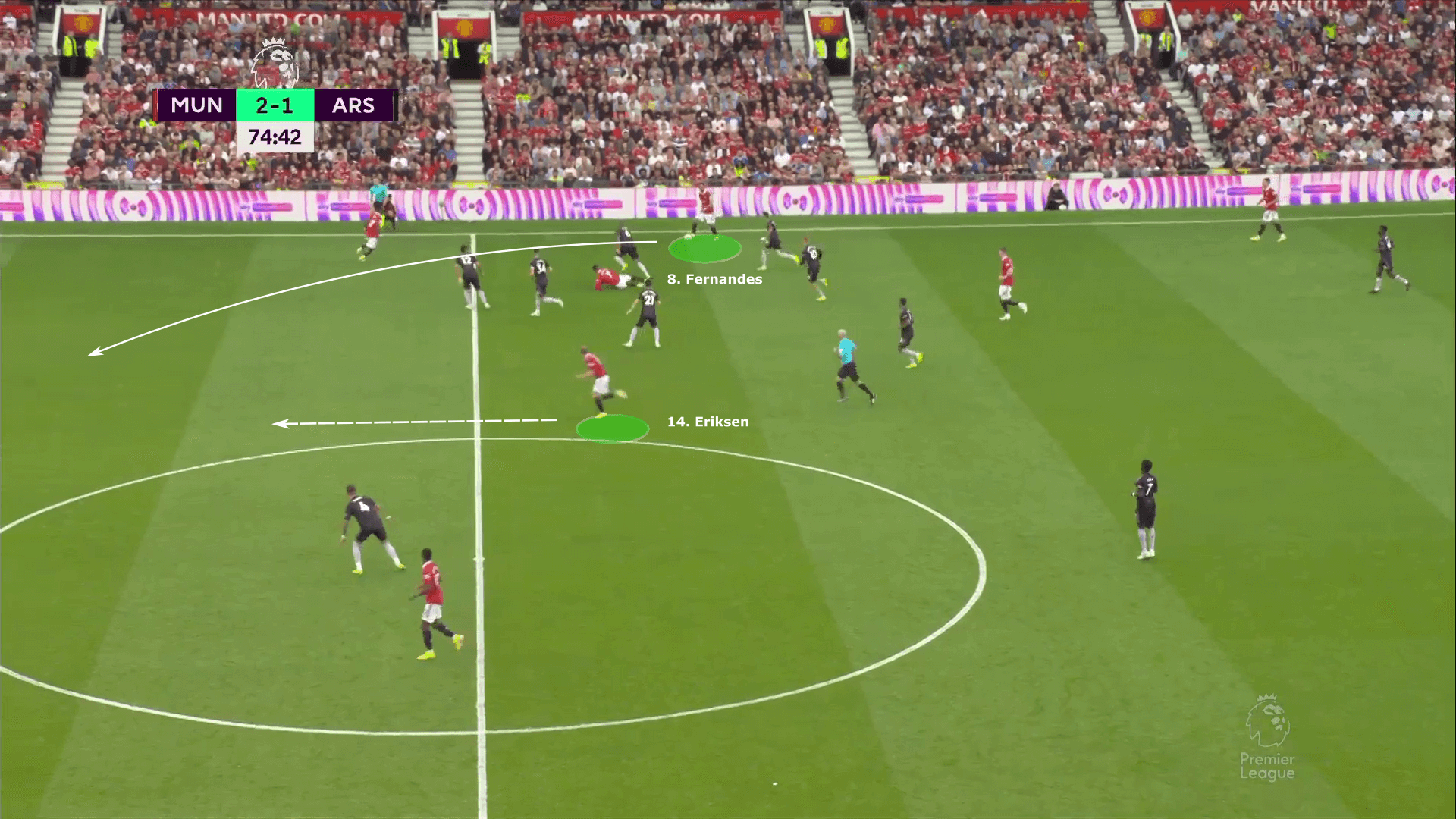
“He can make a game for you, make the switch of play, he sees a pass between the lines, make the final pass and go into attack to score a goal. He can improve his defence, when he plays like today one small mistake, we’ll give him that, he played a magnificent game” stated a delighted Ten Hag after the game.
He capped off a man-of-the-match performance to hand United their fourth straight league win.
Christian Eriksen vs Arsenal:
- Touches: 56 (1st)
- Passes: 42 (1st)
- Chances created: 3 (1st)
- Penalty area entries: 4 (1st)
- Distance covered: 11.2km (2nd)
Conclusion
Adding dynamism, security and creativity to a midfield that has needed that for such a long time, Eriksen has been the perfect fit under Erik ten Hag. It was clear that the Dutch manager wanted to build United’s midfield around prime target Frenkie de Jong, but Eriksen has been able to fulfill the job, for now.
It seems that there is a massive drop between the first team and the options from the bench. What about Donny van de Beek? Will he come into the fold under his old manager? He would have hoped to play in the Europa League but injuries have hindered his involvement.
It will be interesting to see how Eriksen and United can sustain this level of performance with games every three days from now until the start of the World Cup in November.

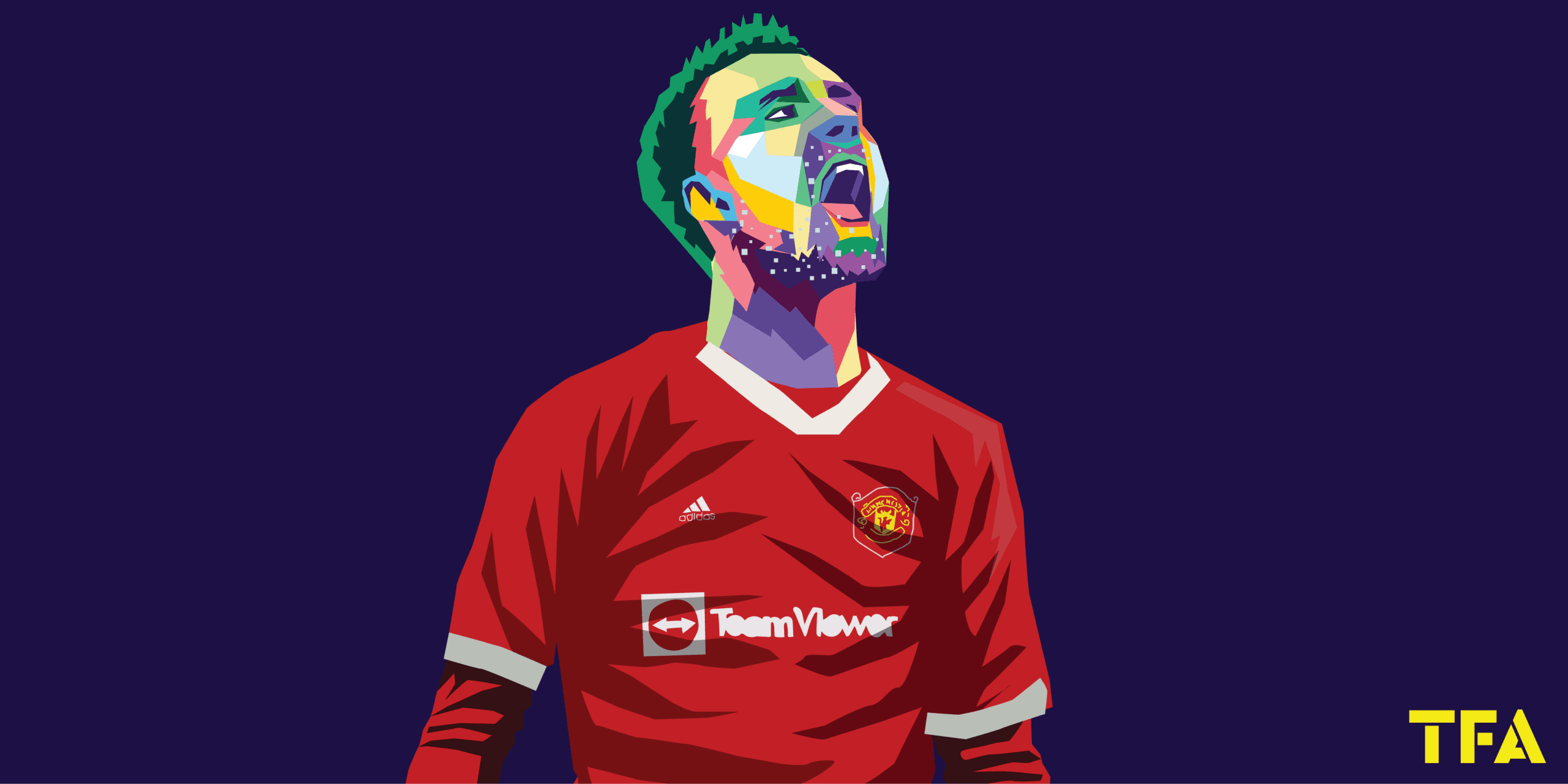



Comments